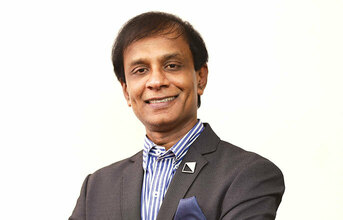
Mr. Krishnan, could you share your journey in the engineering industry and the foundation of Detroit Engineered Products?
I am so proud that DEP has completed 25 years. Over these years, I have seen the company evolve from a Michigan-based CAE services and software provider. Witnessing it growing its base into five countries, seven offices, and numerous global partnerships across various product and service domains still feels unbelievable.
You know, our journey has been marked by many steppingstones, including the release of each new version of our flagship CAE platform, DEP MeshWorks. We also celebrated the establishment of our product development wing, where we've collaborated with clients to create diverse custom products—from drones, people movers, and e-scooters to agricultural equipment and laser cutters.
Another notable achievement for us was the introduction of the IC sensor, a technology enhancing efficiency and reducing emissions in internal combustion engines. As we continue to broaden our service offerings, the journey becomes even more captivating and dynamic.
Could you provide an overview of what a CAE platform is and how it is benefiting our industries today?
CAE is basically a computer-aided engineering (CAE) platform; this sophisticated software employs computational methods to simulate and analyse engineering designs. Hence, it enables a virtual testing ground for products before their physical prototypes are produced. Doing so will streamline the product development lifecycle.
Engineers today use CAE to model and analyse designs and predict how their prototypes will perform under various conditions, which reduces the need for costly physical prototypes. Using CAE in automotive, aerospace, electronics, and manufacturing enhances efficiency, minimises development time, and ensures product reliability. In my opinion, with CAE in the picture, engineers can make informed decisions, which will give birth to innovation and competitiveness in the engineering landscape.
What is it that distinguishes your CAE platform from other CAE platforms?
MeshWorks is our own CAE platform, through which users can employ morphing technology to create conceptual CAE models and make direct modifications within the model. Our users then get the freedom to make improvements to parameters later if their desired performance satisfaction is not achieved.
This approach allows for swift adjustments and enhances efficiency in achieving solutions. We have integrated workflows as well that enable the user to do repetitive CAE workflows really quickly.
There is often a skill gap seen in this industry, and it is seen that those who have the skills are often difficult to retain. What methods do you employ to provide skill training and employee retention?
My approach with respect to employees goes beyond addressing skill gaps and retaining employees. As a company, we aim to create an environment where employees feel valued and motivated to stay and grow within the organisation.
With respect to this, we have put various strategies in place. Firstly, we prioritise collaborating with educational institutions and offering internships and apprenticeships to students. Even in the industry, DEP participates in job fairs and networking events and invests in training programmes.
We also encourage our employees to obtain relevant certifications and even facilitate cross-training to ensure versatility. At DEP, we ensure to provide regular performance feedback that acknowledges achievements and also identifies areas for improvement.
Further, we do maintain competitive compensation coupled with benefits, which helps us attract and retain top talent. Alongside flexible work arrangements and prioritise a positive workplace culture.
Understanding what the industry demands, we adjust and tailor our training programmes to ensure that our employees are up-to-date and remain at the forefront of the field.
Continue Reading on Page 2
